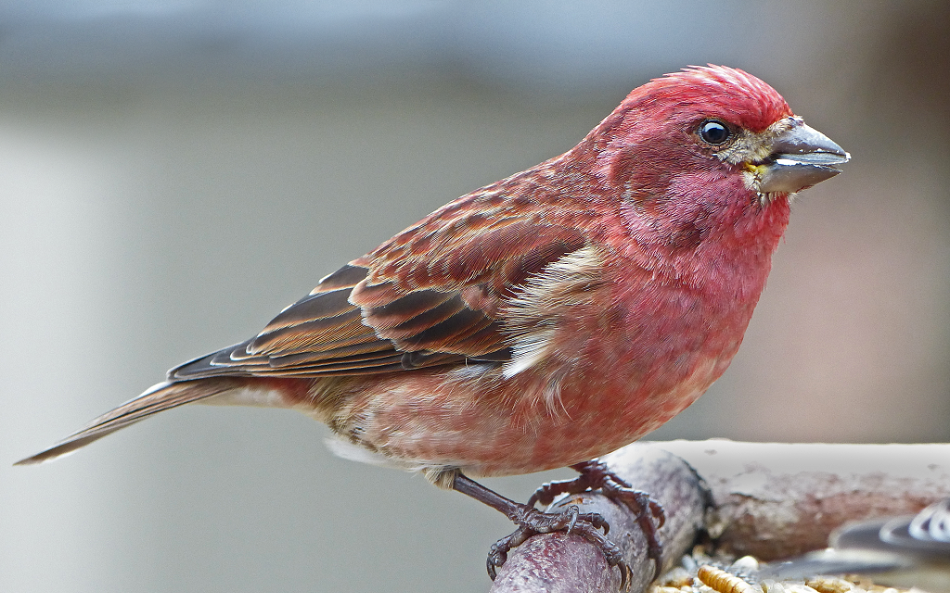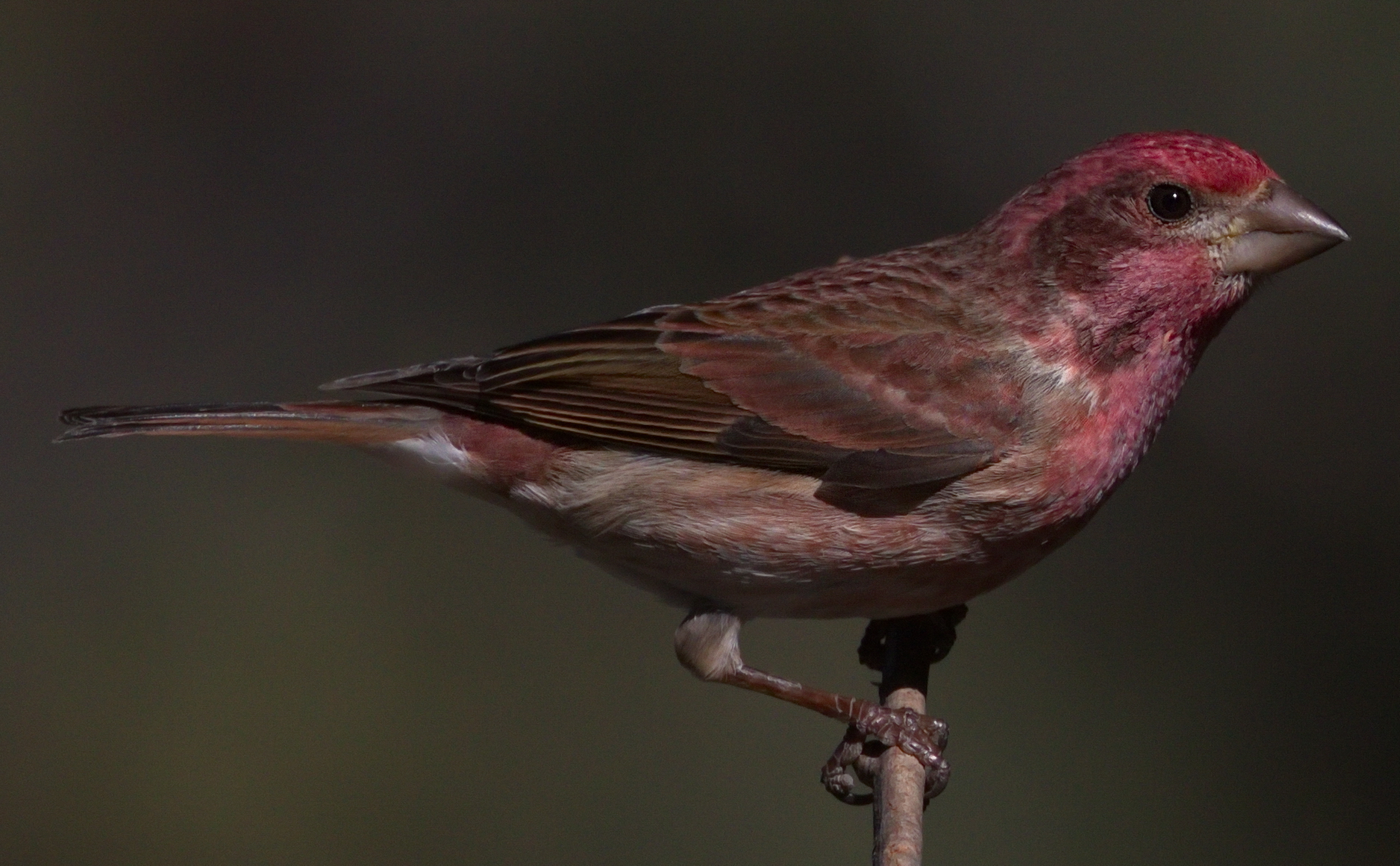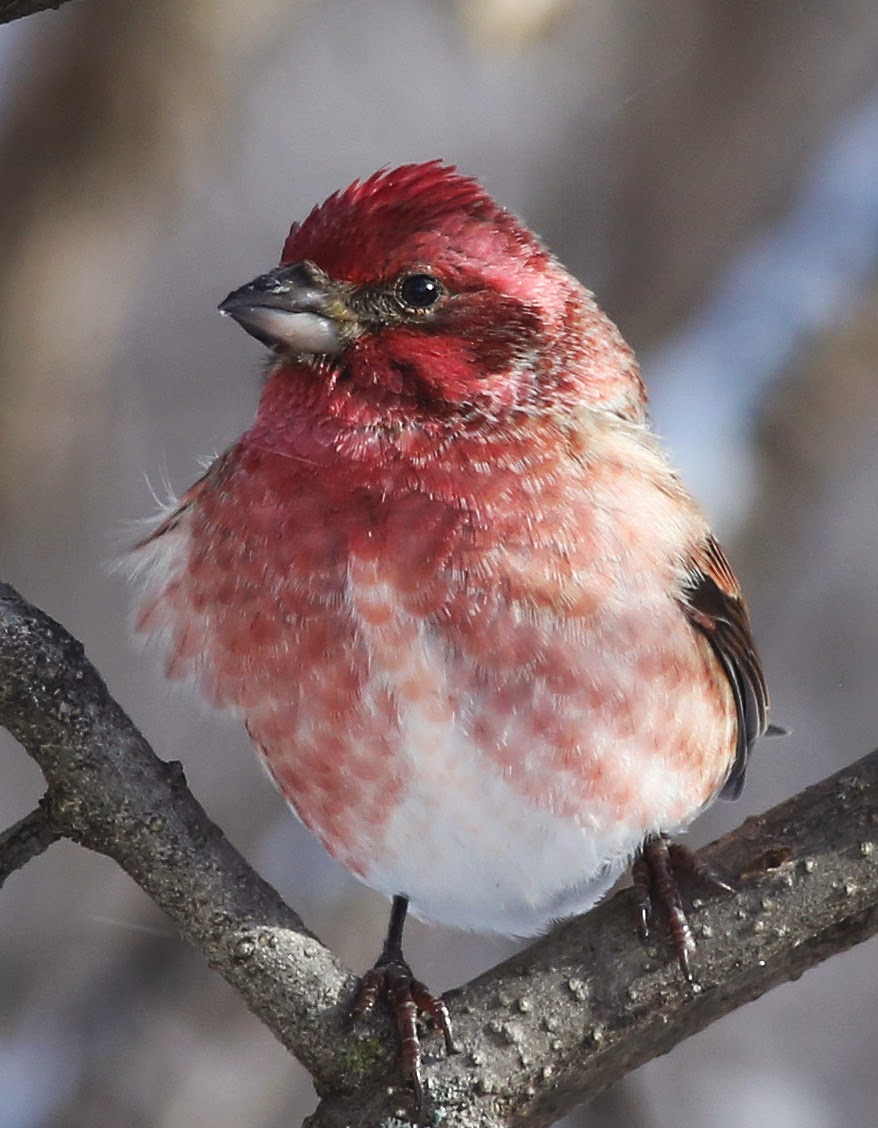

They also have a boldface pattern with a strong whitish-color stripe over the eye and a warm buffish wash on the breast. The female rose-breasted grosbeak Pheucticus ludovicianus is a much larger and stockier bird than the female purple finch. The female/immature purple finch is considerably smaller than the female rose-breasted grosbeak and also has a much smaller beak. I look forward to seeing and hearing the males sing their distinctive song from the very tops of the trees and the gutsy females keeping the other birds in line at my feeders.

Hopefully, these birds being here in fewer numbers this winter was due to seeking out another food source and I’m not experiencing an overall decrease in their numbers. I’m hoping to see the arrival of these birds soon. Just remember in order to minimize the spread of disease, keep your feeders and birdbaths clean and only use fresh bird food. A seed preference study determined that they are partial to thinner sunflower seeds over wider seeds. Purple finches have large, seed-cracking beaks, and seem to enjoy black oil sunflower seeds the best. Providing food sources in your yard can help as well. You can do your part in helping these birds thrive by planting a variety of coniferous trees in your yard that may encourage these birds to visit and create a welcoming habitat for them.
#SHOW ME A PURPLE FINCH HOW TO#
See also How to Attract Black-capped Chickadees with a Variety of Foods I will also clean my bird feeders thoroughly and put them back out when I think the coast is clear. In order to decrease the spreading of this disease, I take down all of my feeders to deter the birds from congregating in one place. I have seen purple finches exhibiting symptoms of house finch eye disease in the past. The disease has affected several other wild bird species, including the purple finch, American goldfinch Spinus tristis, and evening grosbeak Coccothraustes vespertinus. While some infected birds recover, many die from starvation, exposure, or predation. You may observe an infected bird sitting quietly in your yard, clumsily scratching an eye against its foot or a perch. In extreme cases of this disease, the eyes will become swollen shut and the bird becomes blind. In regard to disease, birds that have been infected with house finch eye disease (also called Mycoplasmal conjunctivitis) will have symptoms such as red, swollen, runny, or crusty eyes. I think they come over from the horse rescue down the street as they like to take up residence in their barn as they prefer to nest in human-made structures. These birds show up once a year during the spring. I have very few house sparrows in my yard and visiting my feeders. I have yet to see a house finch at my feeders or in the yard. Competition doesn’t seem to be an issue in my yard from the house finch or house sparrow. House sparrows travel in gangs and will attack and kill a variety of native-American bird species. This bird has also been displaced from some habitats by the introduction of the house sparrow Passer domesticus, which is considered to be an invasive species.

When these two species collide, the house finch outcompetes the purple finch. Populations have also declined sharply here in the east from the competition with the house finch Haemorhous mexicanus. Two factors for the decrease in these birds could possibly be factors such as competition and disease due to the introduction of other bird species. According to the North American Breeding Bird Survey, purple finch populations have decreased by almost 1.5% per year between 19, resulting in a cumulative decline of 52%. After doing some research, I found some interesting information about the decrease in the overall numbers of these finches. I’m not sure if this will be a permanent occurrence or if I will be seeing an increase in numbers as we transition into the spring season very shortly. I thoroughly enjoy watching these colorful birds at my feeders throughout the year.Īlthough recently, I have noticed fewer purple finches at my feeders, especially this winter.

The females lack the vibrant colors of the males, but what they lack in color they sure make up for in personality, as they are quite feisty. The males are not exactly purple, but more of a delicate pink-red with a raspberry-colored head. Would you like to follow GlaszArt on social media?Īs a vibrantly-colored visitor of bird feeders, the purple finch Haemorhous purpureus brings quite a lot of aesthetically pleasing qualities to its environment.


 0 kommentar(er)
0 kommentar(er)
